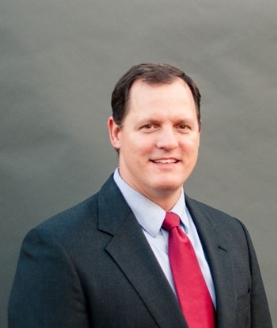 Your nerves play a major role in both muscle function and sensation. When they are injured, there is a chance they will be able to mend on their own (through a process called regeneration). If your nerves are unable to do so, then you may need Dr. Eric H. Williams to assess your situation and determine if repair, reconstruction, or other surgical intervention may be necessary.
Your nerves play a major role in both muscle function and sensation. When they are injured, there is a chance they will be able to mend on their own (through a process called regeneration). If your nerves are unable to do so, then you may need Dr. Eric H. Williams to assess your situation and determine if repair, reconstruction, or other surgical intervention may be necessary.
Nerve Anatomy
Your nerves connect your spinal cord and brain to your skin and muscles. This allows you to feel physical sensations and move your muscles. When a nerve is injured, there is a disconnect in the information being relayed between the brain and skin or muscles.
The nerves in your arms and legs range in size from the diameter of your thumb to the diameter of a human hair or less. The closer to the spinal cord they are, the larger they get. This is similar to a tree trunk with branches; the trunks are closer to the spine, and the branches spread out as they get farther away and travels to the various muscles, organs, and skin that it belongs too. Some are larger, some are smaller. Inside the main nerve can be thousands of tiny nerve fibers. This can be thought of as being similar to a telephone cable. These nerve fibers are grouped together into bundles known as fascicles. Some nerves—including the median and ulnar nerves in your arms—have both sensory and motor fascicles. This allows you to have both feeling and movement in your hands. Some nerves are just sensory, and some predominantly motor branches.
Natural Nerve Recovery and Regeneration
Following injury, a damaged nerve will attempt to repair itself by sprouting regenerating nerve units. These units will try to grow down the nerve in an attempt to restore nerve function if the nerve is still intact. If the regenerating nerve units are able to make a correct connection, then recovery of lost muscle function or skin sensation can occur. When they are unable to make a correct connection, there will be no recovery from the injury.
There are different levels of severity of a nerve injury. The most likely to recover are those injuries where none of the internal structure of the nerve has been injured. The worst injury is when a nerve is ripped apart or cut. These more severe injuries will always require surgical intervention to try to improve outcome. Many times the lesser nerve injuries can recover on their own. Depending on the kind of injury, nerves are able to regenerate at roughly an inch per month. Sensation can be regained following long periods of denervation (which is loss of nerve supply). Restored nerve function for muscles, though, does not happen after long periods without nerve supply (nerve innervation). Accordingly, it is important to repair nerve function to muscle as quickly as possible when the injury is severe enough that there is little chance that it will recover on its own.
Nerve Reconstruction Surgery
When surgery to address your injured nerve is necessary, there are several different types of surgery we may use, including:
- Neurolysis – This is by far the most common procedure that we perform as most of the injuries that cause chronic pain and dysfunction can be lower energy trauma. This is the removal of structures that compress a nerve or scar tissue from around the nerve. In some cases of nerve injury, scar tissue or tight or swollen structures that cross a nerve may prevent the affected nerve from regenerating, so they need to be removed.
- Nerve repair – When a nerve is injured by a sharp cut, it may be possible to sew the ends of the nerve back together. This provides guidance for the injured nerve to regenerate its fibers.
- Nerve grafts – When it isn’t possible to sew two ends of a damaged nerve back together, especially if the damage is rather extensive, Dr. Williams may need to use a nerve graft. In this instance, a small piece of donor nerve bridges the gap between the two nerve ends. The nerve then regenerates across the “bridge” to recover.
- Donor nerves are typically taken from areas of the body that use small, noncritical sensory nerves. If a larger quantity of donor nerves is needed, several nerves might be used. Following the procedure, there may be a large area of numbness in the region of the donor nerve, but this becomes smaller as time passes. It is fairly common for tingling to be experienced in those areas as sensation is restored. However, now the use of donated processed nerve grafts are available in some situations.
- Nerve transfers – These are used in some cases when muscle or sensory recovery is not anticipated for a very long time. In these cases, functioning nerves that are expendable —particularly ones that are close to the target muscle or sensory area—are transferred to the injured area. The close source of nerve tissue can contribute to faster postsurgical recovery.
As with any surgery, there is risk of complications, including bleeding, infection, and delayed wound healing at the primary surgical site (or the donor nerve site, for cases of nerve grafting). With this particular type of surgery, it is possible that nerve function—sensory and/or motor—in the region of the injury will be diminished. Pain is also a potential risk for nerve reconstruction surgery.
Factors affecting nerve reconstruction success include:
- Time since injury. Peripheral nerve injuries requiring surgery tend to have better results the earlier the nerve is repaired after injury. Accordingly, there are typically progressively worsening results when the surgery is performed 3, 6, 9, or 12 months (or longer) following the injury.
- Type and extent of injury. The nature of the injury itself is a major factor in procedure success rates. Basically, we are more likely to see better outcomes when the nerve injury is more confined and localized, there is less trauma to the injured nerve, and the nerve graft is shorter (or the nerve can be repaired without grafting).
- Vascularity in the area. For nerve reconstruction to be successful, the repaired area will need a healthy level of blood flow. Accordingly, nerve injuries in areas adjacent to healthy soft tissues have better success rates than do those inside areas with significant scar tissue.
- Length of graft needed to repair the damaged nerve. A short nerve graft simply has better odds for a successful outcome than does a longer graft (which can have unpredictable results).
- Quality and type of nerve repair. Quality repairs obviously have the best results. This is a major reason to see an experienced, skilled nerve surgeon like Dr. Eric H. Williams.
- Tension on the repaired nerve. Excessive tension can lead to a breakdown at the point of repair, and a less-than-desirable result. The repaired or grafted nerve has better odds of successful recovery when there is no tension on the point of repair and nerve segments flanking it.
- How the host nerve is prepared. Careful removal of the point of injury is important for reconstruction success, as is assurance of healthy, viable nerve tissue at the respective stumps (both distal and proximal).
- Age (and other health factors) of patient. Of course, as with virtually any medical procedure, there are factors unique to each patient. Age is certainly one, with young children having better odds of successful results than elderly patients. This can be attributed to a greater ability for children to adapt to altered nerve programming, along with greater regenerative capabilities and healing and metabolic rates.
Beyond age, systemic factors that can play a role in the outcome include diabetes, alcoholism, smoking, inherited or acquired neuropathies, vascular and bleeding disorders, and connective tissue and autoimmune diseases.
If we are going forward with a surgical procedure, we will discuss how these risk factors relate to you and what results you might expect to see. It’s important to understand, though, that every case is unique. In some instances, we may have a very good idea as to what will happen, but there is no 100% guarantee when it comes to nerve reconstruction.
Contact Our Baltimore Office Today for Nerve Pain Treatment
When you experience nerve pain, request a consultation with Dr. Williams at our Baltimore, MD office. He will take the time to listen to you and work to understand what may have happened. If Dr. Williams determines one of his procedures may be able to address the problem, he will create a customized treatment plan for you. In order to help you make the best possible choice for your health care, Dr. Williams will explain your condition and his proposed treatment, and then answer any questions you might have.
If you would like more information or want to request your appointment with Dr. Eric H. Williams, simply call our office at (410) 337-5400.



